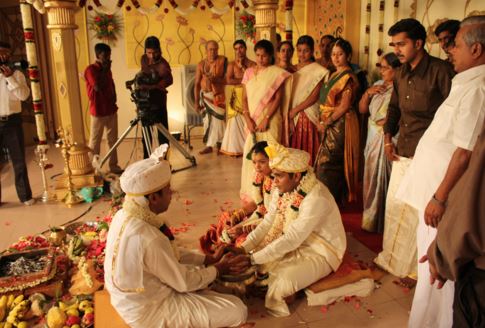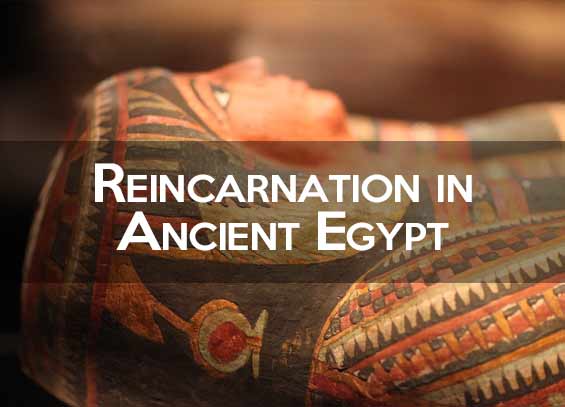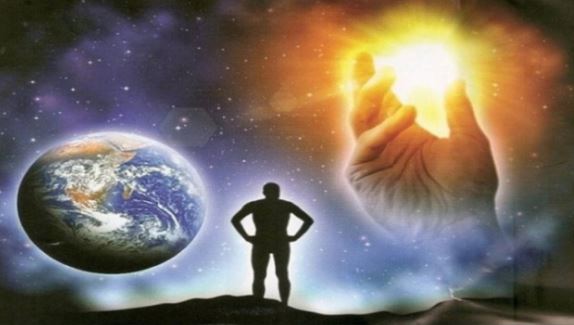Reincarnation in India
The Wheel of Samsara
In the Brahmanical religion reincarnation exists in an endless cycle called the Wheel of Samsara, a “wandering” through life without a fixed purpose or meaning, with a birth and rebirth marked by good and evil deeds, the karma of every soul that has still not been released from its burden.
Reincarnation in India is understood as a process of learning lessons provided by Mother Earth.
If your actions are negative, you will reincarnate in lower bodies such as animals or insects, and probably live a miserable life. It’s no wonder then, the respect Hindus have for life, especially visible on the streets and highways where wandering cows, dogs, goats, chickens, buffaloes can be found. Nobody kills an animal, which is why most Hindus are vegetarians.
Read also: Reincarnation Cycle: What The Church Doesn’t Tell You
The sacred cow

The cows are a sacred animal in India and you can see them everywhere, people feed them even if they are not their owners, just as an offering, a good action to clean up the karma. The cow symbolizes Mother Earth, nature, fertility, abundance and generosity. Like the mother who feeds her children without asking anything in return, the cow produces milk to feed, oxen (cheaper than tractors) and its manure is used as fuel or cement for construction.
The clearest example of the sacredness of cows in India is the view we can find in roads, where they cross quietly without being bothered by the chaos of the Indian road traffic. After a few days circulating on Indian roads you realize that there is only one traffic rule: no one stops except to avoid running over a cow. Miraculously they do not suffer from too many accidents but driving in India is not for everyone.
The weight of Karma
Let’s go back to reincarnation in India. According to its main religion, Hinduism, a person accumulates positive and negative experiences, good and bad deeds during his earthly life, that is the weight of karma, the weight of all these actions combined determine and affect the process of reincarnation or rebirth. The trajectory of a soul is marked by the content and meaning of his actions and thus each person will be judged once they leave their body after death.
How can we cleanse our Karma?
Only those who attain liberation or union with the state of higher consciousness (Nirvana) and cleanse their karma (get rid of all the consequences of good and bad deeds) reach the ultimate goal: freedom from the Wheel of Samsara, the wheel of reincarnations, to leave the material universe and merge with the Divine Light emanating from Brahma, the universal soul, becoming part of it.
Superstitions and fears in India
Practicing yoga, doing good deeds, meditation and praying are techniques used to cleanse our karma and achieve a higher state of consciousness. Religion is the meaning of life for a Hindu and as bad actions can hurt you at the time of reincarnation, it is no surprise that traveling in India is very safe. Nobody steals, kills an animal, nobody will do anything that can hurt them and make them reincarnate into a worse life.
Read also: Do Hindus Believe In Reincarnation?
Reincarnation in India: the astonishing case of the girl Shanti Devi
This is one of the most notorious and researched cases of all of the manifestations of reincarnation in India. While there were many cases, and some still being researched, we will see why this was the most shocking, and why it went around the world even in modern times.
Back from the Afterlife

Shanti Devi was born in Delhi, India, in 1926 in the bosom of a wealthy family. At the age of four the child began repeating a strange story. With dramatic eloquence she told memories of another life in which she had lived under the name of Ludgi in the company of her husband Kedarnath, and their three children.
She described in great detail her former home, for which she also gave an address in the city of Muttra, southeast of Delhi, a major political, religious and artistic center during the second and third centuries B.C.
Her parents initially thought it was the babbling of a somewhat lonely creature who spent much of her time playing with dolls. Despite the passage of time, she kept repeating the same story, becoming a kind of obsessive trauma, and the family, fearing that the girl was suffering from a mental disorder, took her to the doctor. The doctor, who was aware of the case, examined and questioned her.
Shanti again told the doctor what he already knew from her father and added that she had died during the birth of her third child in Muttra at the end of 1925, ie, almost a year before her official birth in Delhi. The doctor asked her for more details on her alleged last pregnancy and the child provided a complete picture of the physical and mental process of that situation, in a way only a pregnant woman could have told it.
This doctor, like others who investigated years later, concluded that Shanti Devi was healthy in body and mind but his diagnosis could not scientifically explain the nature of this strange story.
Kishen Chand intervenes

When Shanti was nine years old, his uncle, Professor Kishen Chand, decided to do something that until then no one had done The man wrote a letter to Kedarnath, the alleged husband in the story, and sent it to the address in Muttra that so often had repeated the girl. Among the relatives and friends of the Devi family arose a great expectation. Could he really find this Mr. Kedarnath in Muttra?
The letter finally reached its destination. The girl had not lied or made up anything. The reaction of the widower after reading the lines where Kishen Chand narrated the fantastic story and invited him to travel to Delhi to meet with the family, was a combination of surprise and fear.
Kedarnath thought at first that Chand wanted to blackmail him or keep part of the marital property he inherited upon the death of his wife Ludgi in 1925.
Wrapped in fears and worried about clarifying that suspicious matter as soon as possible, he decided it was prudent to stay in Muttra and write to his cousin who was living in Delhi, explaining the situation. In this letter, Kedarnath asked his relative to make an incognito visit to the Devi family with any excuse and tell him of his impression of the honor and honesty of its members.
Kedarnath’s cousin visits the family
Kedarnath cousin did exactly what was asked. First he discreetly asked the neighbors for references about the reputation of the Devi family (which were excellent), then to complete his mission, he invented a commercial excuse and visited the family one night.
He knocked on the door of the house, and Shanti, who was helping her mother in the kitchen, ran to open the door. As the girl was taking too long, Mrs. Devi went to see what happened and found her daughter dumb in stupor and trembling against the newcomer who was no less surprised, as Shanti, who had never in her life seen him, had recognized him immediately as the cousin of his husband, who had once lived near their home in Muttra.
Excited about all the details that the girl gave about the family life of Kedarnath, the young man finally admitted being the cousin and confessed to Shanti’s father, who had just arrived, the real purpose of his visit. He further stated that, indeed, everything that little Shanti had said was strictly true. Kedarnath lived in Muttra with his three children. His wife Ludgi had died having her third child in 1925.
Ludgi’s mother, an elderly widow, lived in a house in the vicinity of his son in law. Kedarnath’s cousin told this when Shanti had already gone to sleep, not wanting to disturb the child even after the unusual experience of the evening. Meanwhile Professor Kishen Chand joined the family and , with the consent of Kedarnath’s cousin, it was agreed that Mr. Devi would pay for train tickets to Kedarnath and his firstborn son to Delhi.
Those present agreed not under any circumstances reveal these plans to Shanti.
The arrival of Kedarnath and the impact of the press

Fifteen days after that, Kedarnath arrived to the house of Devi accompanied by the youngest of his three children. For Shanti, who knew nothing of the arrangement, this was another dramatic surprise. She kissed Kedarnath, greeted him as if he really was her husband, hugged and squeezed to her chest the little child, who began to cry frightened by the strange behavior of that unknown girl. The scene was very touching to both Kedarnath and the Devi family.
There were tears, admiration, amazement and curiosity. Kedarnath admitted his first apprehensions were unfounded, but he was still very confused and could not understand this girl who talked about intimate things about his family and his late wife. The man, completely baffled, returned with his son that day to Muttra. The fact had already transcended the family and was of public knowledge.
Mr. Desh Bandu Gupta, for example, the president at that time of a major chain of publications (the All-India Newspaper Publishers Association) and Delegate in Parliament of India, ordered to carry out a survey of the case. An ad honorem commission headed by Gupta himself was appointed to subdue Shanti Devi to a final and conclusive evidence on what, was considered a living irrefutable evidence of reincarnation in India.
An entourage integrated by the child, her parents, Desh Bandu Gupta, Tara C. Mather, a renowned notary, and other notables of Delhi departed one morning on a train bound for Muttra. In the convoy there was a high number of local and foreign journalists eager to know what the reaction of Shanti would be when she came to the city where she had been born in her previous life.
The Recognition

Muttra station was crowded with onlookers. Upon arrival Shanti had the sensation of entering into a trance. She walked like a sleepwalker through the winding streets of the old city followed by the procession and a heterogeneous crowd. The reincarnated child stopped at times in front of a bazaar, then continued to get back on track. She finally came to the house of Kedarnath, and entered.
There she saw again her firstborn son, she recognized the second but could not identify the third, whose birth had caused her death. Kedarnath took advantage of this visit to ask if she remembered what Ludgi Shanti had done with the valuable ring he had given her before her death and had not been able to find since then.
The girl unhesitatingly pointed to a spot in the garden and explained that she, Ludgi, had buried it inside a box. The man dug superficially in the right place and found it.
Shanti Devi found herself, without prior knowledge or help, the house where her previous life mother lived and when she saw it ran to her and kissed her face bathed in tears. Even the most cynical observers were forced to accept that these demonstrations were spontaneous, inexplicable and authentic. The possibility of fraud had been excluded, but experts still could not agree on the essence of the phenomenon itself.
Was it a hysterical, paranormal manifestation, or was Shanti Devi the real reincarnation of Ludgi?
To date remains the most powerful and best documented case trying to show the reality of reincarnation in India and possibly in the world. All the publicity proved disastrous for the life of the “reincarnated girl from Delhi“ as Shanti became known. Her previous life relatives, husband and children, harassed by the parade of onlookers around the world, cut all ties with Shanti. When she became a woman, she had to struggle to live with her reality.
Until a few years ago she lived in New Delhi and worked in a public office, living alone. Professor Indra Sen, from the Sri Aurobindo Institute of the city of Pondichery in India, has the complete file of this enigmatic case (in 1958 the Washington Post published some US notes and interviews with Shanti Devi).
The scientists and researchers who worked on the case, concluded that a girl born in Delhi, India, in 1926, seemed to remember with remarkable clarity another life in Muttra separated by the thin veil of death.
Shanti Devi has written books about her case and reincarnation in general and has also talked about it in many books, lectures and documentaries. Read also: Reincarnation Studies And What They Found
##Video: Reincarnation of Shanti Devi
This concludes our article on Reincarnation in India. Make sure to share the information with your contacts and help us spread the word. Keep reading this website to learn more about reincarnation and the afterlife.






